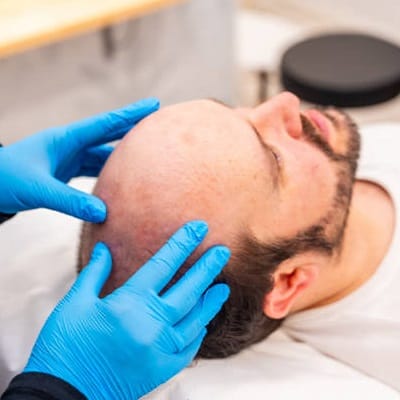
Hair loss may be an upsetting and stressful process that impacts confidence and self-worth. Numerous methods are now available to avoid hair loss due to changes in medical science. People frequently praise Hair Transplants as a long-term solution. But many people do not know this thing How Does a Hair Transplant Compare to Hair Loss Treatments?
What is a Hair Transplant?
In hair transplant, hair cells are removed from one part of the body, usually the back of the head to an area where hair development is poor or lacking. Hair grafts are made using two main techniques:
The difference Follicular Unit Extraction (FUE) involves, is a process of extraction of hair follicles and transplantation of a single hair follicle.
In the Follicular Unit Transplantation( FUT) process, it involves the excision and repair of a skin flap that has hair follicles.
Hair patches are used by individuals with big hair loss or complete baldness given going for hereditarily inclined or for some other explanation.
Non-Surgical Hair Loss Treatments vs. Hair Transplants
Each of the several non-surgical hair loss ways has benefits and risks as well. They are similar to hair transplants in the following ways:
Medications:
- The person takes minoxidil (Rogaine) to the head to promote hair growth.
- Finasteride, often known as Propecia, is an oral drug that helps avoid hair loss and, in some cases, boosts hair growth.
Comparison:
Effectiveness: Although these drugs are not ideal for fixing big bald spots, they may be useful for weak to moderate hair loss. In contrast, hair transplants may greatly increase the amount of hair in bald places.
Maintenance: Constant usage of drugs is needed. If you stop them, hair loss can come back. Permanent hair transplants remove the need for constant care for the moved area.
Side Effects: Even though hair transplants have surgical risks which include infections or scars, drugs come with other side effects such as hormonal changes or swelling of the head respectively.
Platelet-Rich Plasma (PRP) Therapy
When undergoing PRP treatment, your blood is taken and injected with platelet-rich plasma into the head to enhance hair growth.
Comparison:
Effectiveness: Rather than fixing total baldness, PRP works better to improve hair growth and lessen loss. However, even in places that are extremely bald, hair transplants may return the hair.
Time: A hair transplant usually takes one or two steps, while PRP treatment needs repeated sessions.
Laser Therapy
During low-level laser treatment (LLLT), the use of light promotes hair growth and stimulates hair cells.
Comparison:
Effectiveness: Advanced hair loss or baldness cannot be fixed with laser treatment; it is best suited for mild thinning. For major restoration, hair grafts are the recommended choice.
Wigs and Hairpieces
Wigs and hairpieces provide a quick, non-medical answer for hair loss.
Comparison:
Natural Look: The natural growth and feel of copied hair are better than the exact look of high-quality wigs.
Maintenance: While hair transplants are a one-time cost, wigs need to be changed and looked for on a regular basis throughout time.
Confidence: Compared to having a wig, many people feel more confident when a set choice, such as a hair transplant, is used.
Advantages of Hair Transplants
Benefits of Natural Results: Since hair transplants utilize your hair, the results feel and appear real.
Permanent answer: Transplants provide a long-term answer for hair loss, in contrast to earlier methods.
Customizable: Depending on your choices, doctors may build a lifelike hairstyle and change the width.
Are Hair Transplants Worth It?
For those who are experiencing serious hair loss or are looking for a long-term cure, hair transplants are the best choice. Hereditary hair loss (androgenetic alopecia) particularly benefits from long-lasting solutions that surpass the effectiveness of non-surgical methods.
They may not be suitable for everyone, however. It is important to note the degree of hair loss, the ease of giving hair, and general health. To find out whether you are a good choice, it is important to speak with a skilled hair transplant surgeon.
Cost Of Hair Transplant In Islamabad:
The cost of a hair transplant in Islamabad ranges from 95,000PKR to 160,000PKR. This is not the estimated price but the actual price also depends on various factors including
- Surgeon’s Expertise
- Location of the Clinic
- Area of treatment
- Transplant Technique
Final Thoughts:
Hair Transplants in Islamabad are a preferred choice for non-surgical treatments since they provide a long-lasting and all-natural answer for hair loss. Alternatives like drugs, PRP therapy, and laser treatments may improve density or lessen hair loss, but they don’t have the same long-lasting effects. Hair transplants are now safer, more efficient, and more widely available than ever because of developments in methods like FUE and FUT. Visit SKN Cosmetics If you are facing hair loss and want a permanent treatment. Consult with our best Hair transplant Surgeon Dr Naveed Azhar and get the desired solution for your alopecia.



